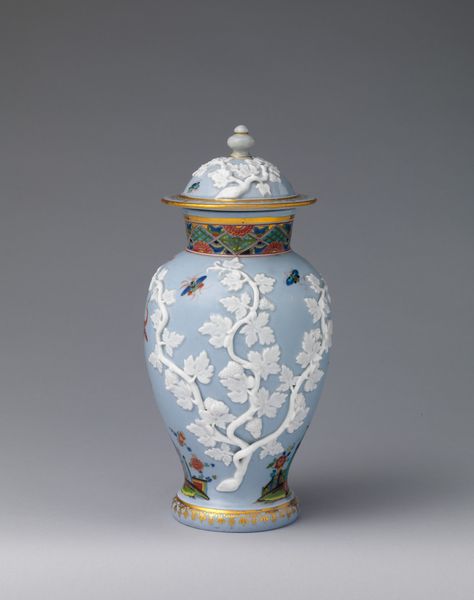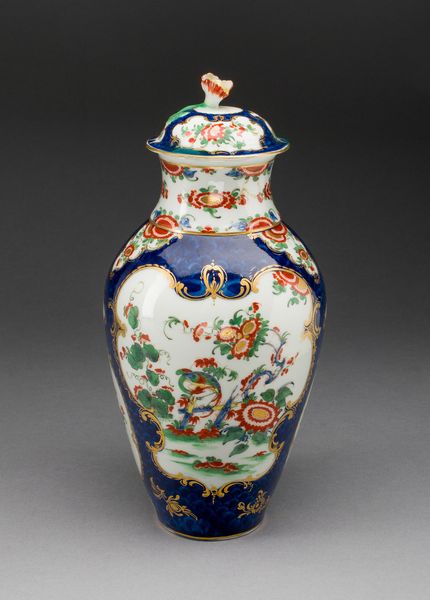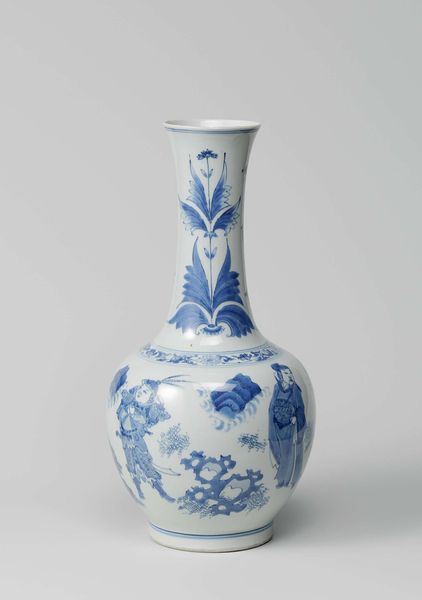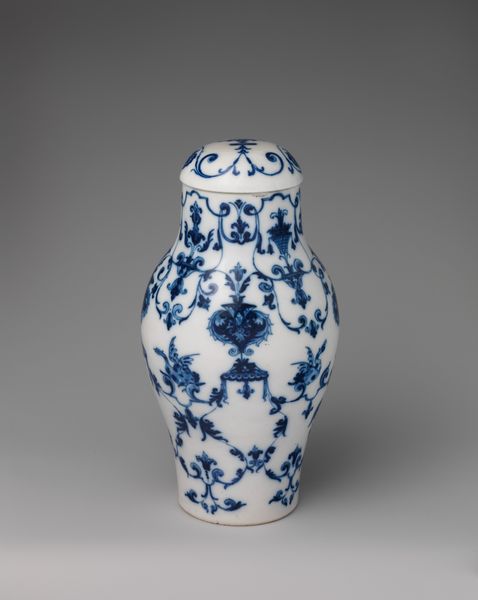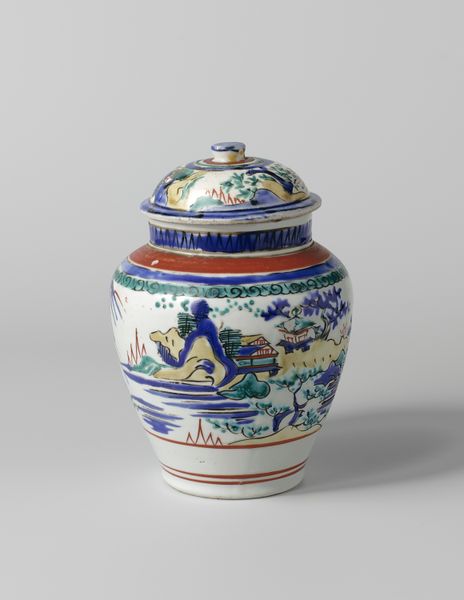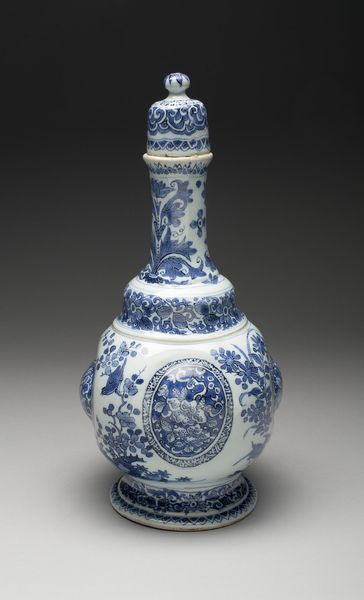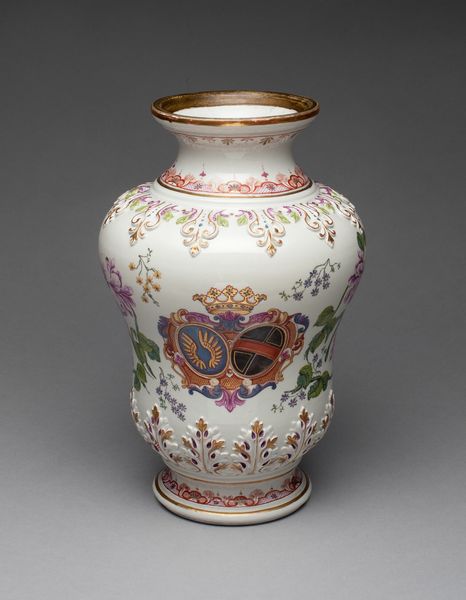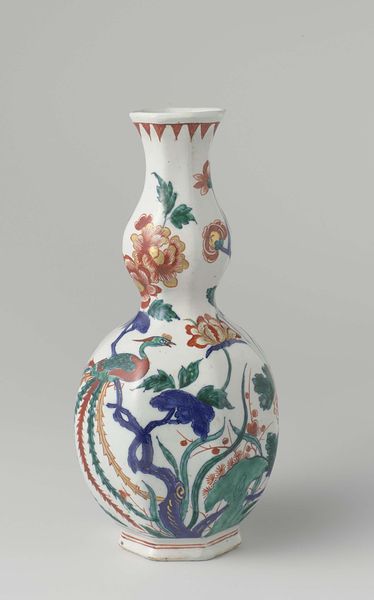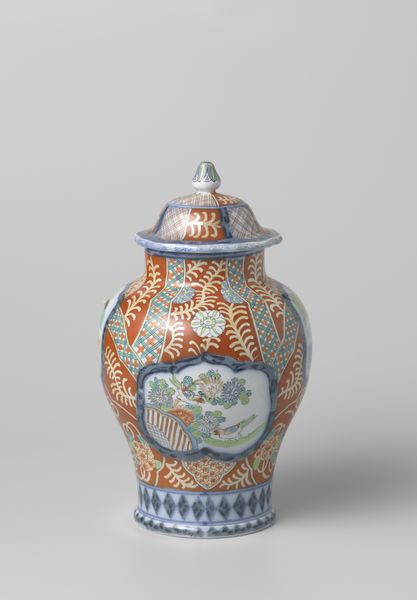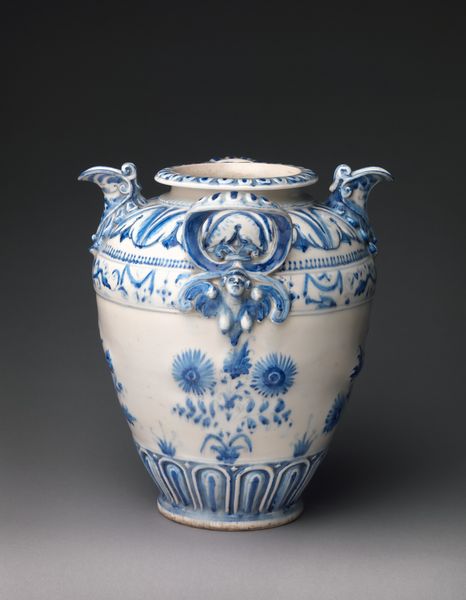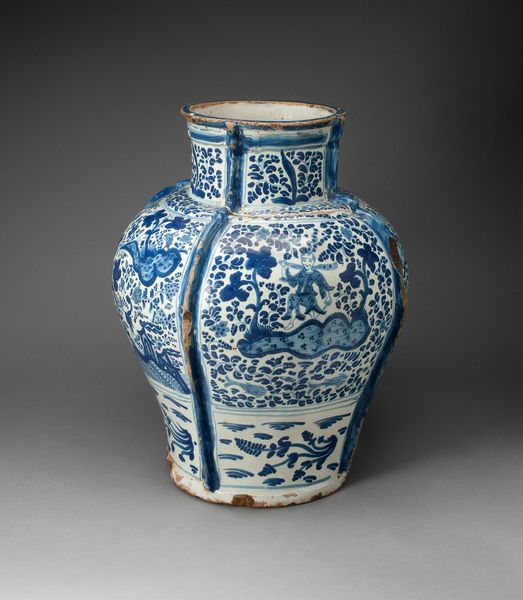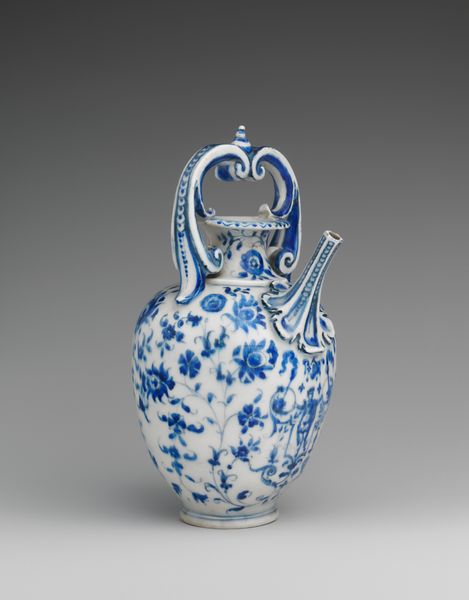
ceramic
#
dutch-golden-age
#
ceramic
#
vase
#
vessel
#
ceramic
#
decorative-art
Dimensions: 17.8 × 17.8 × 5.1 cm (7 × 7 × 2 in.)
Copyright: Public Domain
Editor: Here we have a ceramic “Flower Vase,” one of a pair, crafted around 1700-1722 by the Grieksche A Factory. I find its form so curious – those spouts branching out, all adorned with these delicate, colorful patterns. It strikes me as something purely ornamental, almost whimsical. What can you tell me about this piece? Curator: I see this vase less as mere ornament, and more as a powerful document of its time. Consider the materials: Delftware, a tin-glazed pottery imitating Chinese porcelain. This mimicry speaks volumes about global trade, the desire for exotic goods, and the Dutch East India Company's role in facilitating access. Editor: So, the vase's value lies in how it was made and how the materials tie to larger economic forces? Curator: Precisely. And look at the division of labor: specialized artisans creating individual components. From the shaping of the clay to the painting of the decorations, each step reflects specific skills and factory practices of the Grieksche A Factory. These processes dictated its creation and distribution, ultimately impacting the price and who could afford such a piece. It reflects social class! Editor: That's interesting! It changes the way I see decorative art in general. I always thought of it as frivolous or simply 'pretty', but thinking about the process of its creation and the socioeconomic context makes me appreciate it in a whole new way. Curator: Exactly! We can interpret a lot by deconstructing this piece; thinking less about ‘beauty’, and more about value, consumption, and material accessibility. Editor: I definitely have a lot more to think about, now. It is much more than something pretty!
Comments
No comments
Be the first to comment and join the conversation on the ultimate creative platform.
